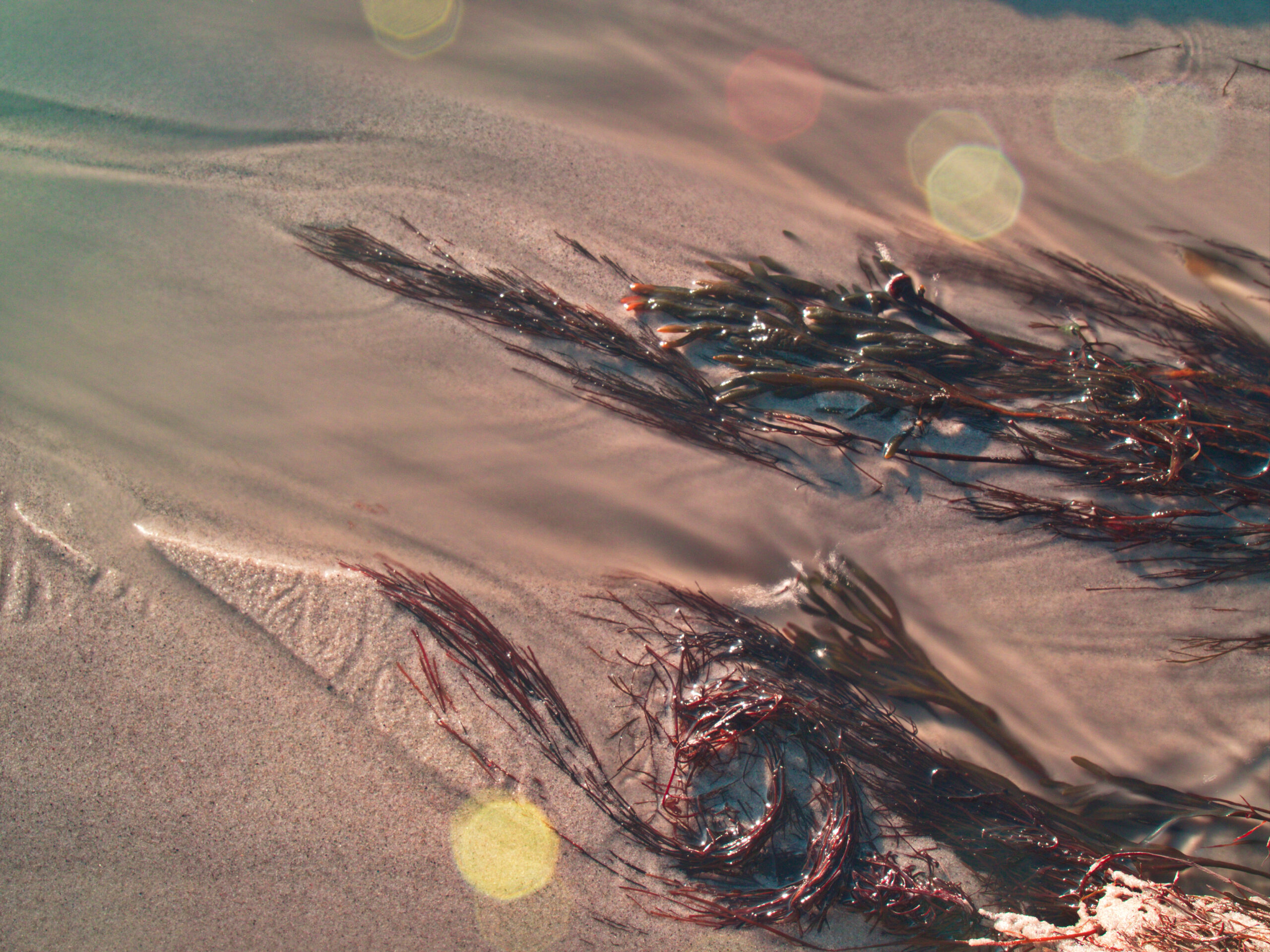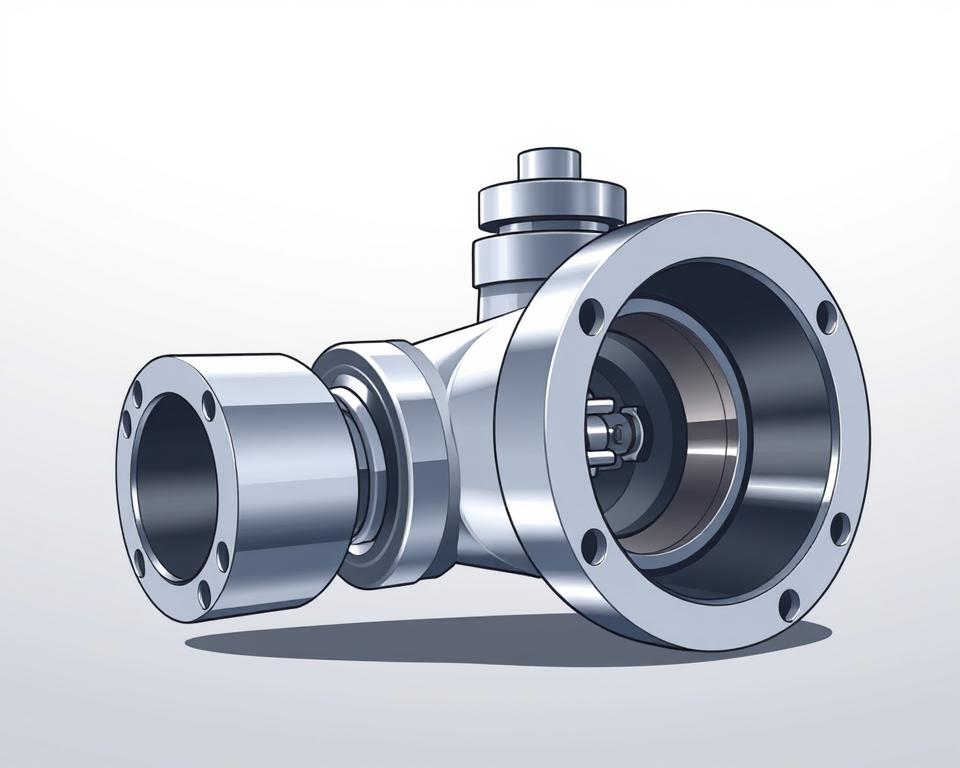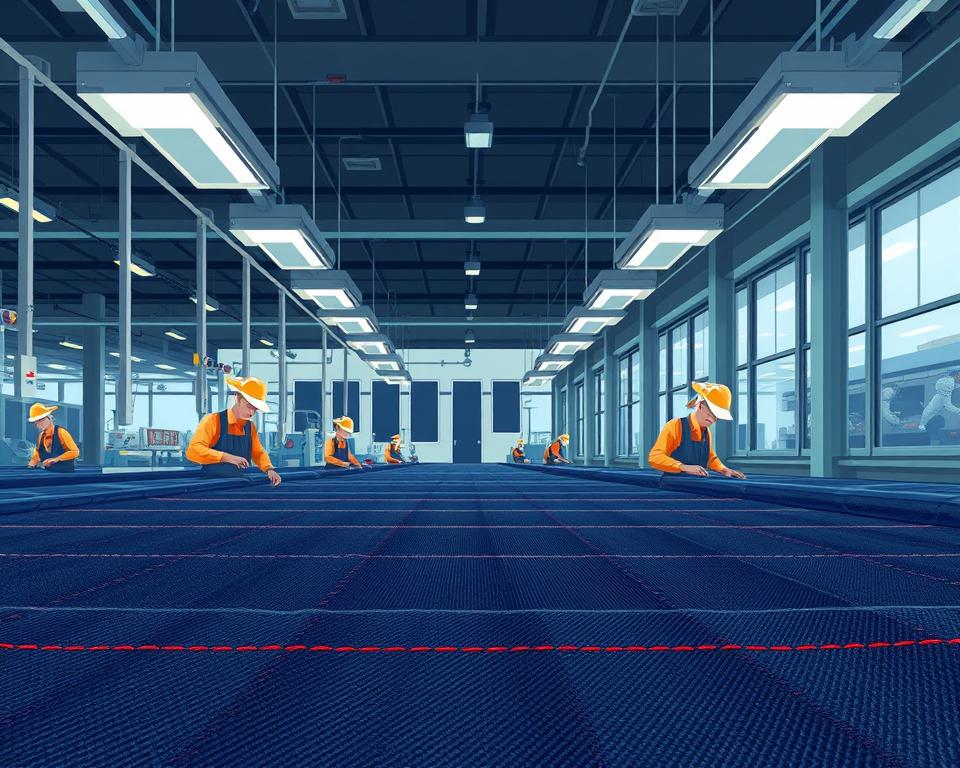Grasping Optical Fiber Secondary Coating Processes
Are you aware that more than 90% of global web traffic relies on fiber optic technology? This information underscores the significance of each component in fiber optic cable fabrication, particularly the optical fiber secondary coating system. These systems are crucial for guaranteeing the fiber optic cables’ strength and functionality.
This piece will investigate the intricacies of fiber secondary coating lines. We will discuss their vital function in protecting fiber optics. Moreover, we will examine how these systems improve cable durability and performance. This information is critical for those engaged in SZ stranding line field and fabrication.
Introduction to Fiber Optics
Fiber optics has revolutionized communication, using light waves over electronic signals. This technique ensures high-speed data transfer with reduced attenuation. At the core of this system are the principles of optical fiber communications. These foundations are reinforced by a complex structure. It includes a core, encasing, layer, strengthening fibers, and a protective jacket. Each part is crucial for the system’s functionality.
The technology’s integration into telecoms has changed our communication landscape. It skillfully controls high data traffic, facilitating web, voice services, and TV services. Thus, optical fibers not only boosts performance but also provides reliability across the globe.
Exploring Fiber Secondary Coating Line
A optical fiber secondary coating process is a set of specific tools and operations. It applies protective layers to fiber strands after fabrication. This secondary coating is crucial for the fibers’ strength and performance. It defends them from environmental and mechanical risks. The importance of coatings in preserving fiber optic strength is clear.
Definition and Importance in Fiber Optic Production
The additional covering procedure is essential in fiber optic manufacturing. It consists of covering the glass fibers with a plastic coat. This layer safeguards the strands during setup and functioning. It prolongs the durability of fibers by minimizing wear from bending, wearing, and contaminants.
Without these coatings, fibers would be vulnerable to splitting and performance issues. This procedure is crucial for upholding the optics’ strength.
The Role of Coatings in Safeguarding Fiber Optics
Coatings are essential in preserving the optical and mechanical performance of optics. They function as a defense against physical strain and environmental conditions. The importance of coatings is obvious; they boost the fiber durability. This ensures more efficient setup and a longer operational period.
This focus on secondary coating is critical for those in fiber optic technology. It’s a detail that substantially influences the fiber’s performance and longevity.
Parts of Optical Fiber Auxiliary Coating Systems
The fiber secondary covering process is a sophisticated arrangement, including multiple critical parts. These components are crucial for producing top-notch outputs. They aid in understanding how a optical fiber auxiliary system operates and what it demands to run efficiently.
Primary Tools Summary
Key machines like optical fiber feeders, gel units, coating machines, crossheads, and cooling systems constitute the heart of the auxiliary coating system. Each machine is essential for the layering operation. For instance, the extruder melts the layering polymer, and the junction unit coats it consistently around the optic. These elements must work together to ensure consistent manufacturing and product quality.
Raw Materials Used in Coating
The pick of materials for covering is critical for reaching the desired performance. UV-cured acrylate polymers are frequently preferred for their superior protective qualities. These compounds protect the optic, enhance its durability, and boost overall performance. The right mix of raw materials provides the end output conforms to industry standards and customer expectations.
Understanding the Secondary Coating Process
The additional layering procedure is essential in the production of optical fibers, delivering vital safeguarding to the recently created strands. This procedure involves the addition of shielding substances to boost the optic’s durability and performance. The timing of this process is essential; it guarantees ideal attachment, as a result minimizing material loss and improving manufacturing productivity.
Producers utilize multiple layering techniques, like polymer application and gel application, to tailor certain layering traits and depths. Each approach brings unique benefits, suited for diverse strand operations and demands. As the demand for high-quality fiber optics escalates, improving the secondary coating process is paramount. It is vital for meeting regulatory standards and advancing coating technology.
Significance of the Draw Tower in Auxiliary Covering
The optical fiber drawing structure is essential in the manufacturing of fiber optics. It extracts strands from preforms while coating with protective substances as they solidify. The standard of the draw tower is critical, influencing the layering’s success.
Functioning of the Draw Tower
The draw tower raises the temperature of the starting material before drawing the fiber at a regulated speed. This procedure is essential for upholding the fiber’s structural integrity. As the fiber emerges, layers are applied instantly for consistent shielding against external and physical harm. The layout of the drawing setup provides perfect layer addition timing and bonding.
Relationship Between Draw Tower and Coating Quality
The extraction structure’s standard directly influences the layering’s end quality. Irregularities in the extraction operation can lead to uneven coating thickness, affecting the fiber strand’s effectiveness. Superior drawing systems eradicate these issues. A even layering setup boosts mechanical performance, making the fiber draw tower more durable and functional in multiple settings.
Characteristics of High-Quality Secondary Coatings
Superior layers are vital for the functionality and reliability of fiber optic systems. They must comply with strict mechanical and optical standards to guarantee information transfer effectiveness. This awareness supports fabricators in creating more reliable items.
Structural and Optical Quality Benchmarks
Secondary coatings need to exhibit exceptional structural qualities. They must endure physical strain and preserve effectiveness across various environmental conditions. This includes bonding strongly to the fiber’s core and preventing contraction or stretching. Furthermore, they should enhance light transmission, enabling rapid communication with reduced data degradation.
Importance of Adhesion and Resistance to Delamination
Adhesion of the coating to the optic’s nucleus is crucial for the technology’s strength. Without strong adhesion, the risk of layer separation rises, likely resulting in failures. Superior layers are engineered to prevent layer separation, providing strength and stability across different applications. This toughness not only prolongs the fiber strand’s longevity but also boosts performance, emphasizing the significance of picking high-quality layering compounds.
Innovation in Auxiliary Covering Systems
The progression of auxiliary covering systems is motivated by the quest for effectiveness and top-notch output. In the optical fiber sector, the use of advanced covering tools is on the rise. These developments feature real-time monitoring systems and improved coating machines. Such technologies enable producers to uphold top-tier benchmarks while optimizing fabrication procedures.
Advances in Auxiliary Covering Tools
Latest innovations in secondary layering processes have revolutionized manufacturing capabilities. New coating machines now deliver precise control over the layering procedure. This causes better consistency and effectiveness in the completed item. Mechanization and advanced system combination also allow faster production cycles with reduced human intervention. This not only minimizes errors but also improves total productivity.
Juxtaposition of Auxiliary Covering Systems
Juxtaposing various secondary coating line technologies is vital. Flexible setups shine for their versatility and expandability. They allow manufacturers to adapt to changing manufacturing needs without major system modifications. In opposition, conventional systems are renowned for their consistency and proven effectiveness. The decision on method hinges on a business’s unique demands, budget, and fabrication targets.
Advantages of Using Secondary Coating Lines
Auxiliary covering systems provide multiple advantages to fabricators in the optical fiber sector. They enhance the production process, causing greater cost efficiency and enhanced item standards.
Financial Savings in Fabrication
Secondary layering processes are vital to reducing production costs. They cut down on wastage and optimize processes, resulting in significant cost efficiency. This productivity boosts profit margins, making it vital for businesses seeking to remain ahead.
Better Item Strength and Lifespan
Secondary coating lines also elevate item strength. The long-lasting layers added through these processes enhance the product durability of fiber optic cables. This means extended durability and dependability, ensuring improved effectiveness and customer happiness.
Implementations of Secondary Layering Processes
Optical fiber auxiliary covering systems are vital across various industries, providing the consistency and effectiveness of fiber strands. These strands are vital in communication networks, building the base for fast online connectivity. They enable efficient data transmission, connecting clients across the globe.
In the healthcare industry, these strands are essential for operational devices and evaluation tools. Their accuracy and resilience are vital for medical applications. The implementations of secondary layering also extend to aviation and military, where they improve network setups and sensor technologies.
Electronics for consumers gain significantly from the improved strength of these strands. They support devices that operate under harsh conditions. The versatility of these strands enables creative developments, making them crucial in today’s modern tech landscape.
Influence of Secondary Layering on Fiber Strand Effectiveness
The auxiliary covering is vital for boosting optical fiber functionality, emphasizing fiber durability and light distortion. A well-designed coating can significantly minimize minor optical fiber flaws that may result in failure under stress.
Impact of Coverings on Fiber Durability
The fiber durability of fiber optics is crucial for their dependability across various applications. Secondary coatings offer a protective layer that reduces strain, reducing the risk of breakage. This defensive cover provides that fibers uphold their physical strength under environmental conditions, ensuring consistent performance across their operational period.
Microbending Performance and Its Importance
Light distortion can affect signal transmission within optical fibers, leading to data loss. Efficient auxiliary coverings mitigate these microbending effects, guaranteeing strands preserve their visual characteristics even in challenging settings. By lowering minor bending issues, manufacturers can provide fiber optic cables provide top-notch functionality and durability throughout their lifespan.
Market Trends and Innovations in Fiber Secondary Coating
The optical fiber auxiliary covering industry is undergoing considerable transformations, motivated by the demand for enhanced effectiveness and sustainability. This evolution is driven by the exponential growth in data communications, heightening focus on the significance of high-quality compounds and cutting-edge covering techniques. These shifts underscore the importance of embracing cutting-edge materials and techniques in the coating industry.
Emerging Technologies in Coating Processes
Progress in layering techniques have caused the creation of innovative synthetic compounds. These substances boast exceptional physical qualities and environmental resilience. Such innovations not only strengthen the longevity of fiber strands but also minimize environmental harm. Furthermore, advanced fabrication processes provide better exactness in coating, leading to consistent product quality.
Forecast for Secondary Layering Processes
The outlook for auxiliary covering systems is set to be marked by the integration of automation and intelligent tools. These advancements are anticipated to simplify manufacturing, thereby lowering expenses and enhancing product quality. As the market continues to evolve, the focus will stay on innovation and discovery. This will fuel additional developments focused on meeting the demands for high-speed data transmission and eco-friendliness.
Hurdles in Secondary Layering
The production of optical fiber coverings faces numerous challenges that affect manufacturing productivity and item excellence. A critical problem is the difficulty in maintaining consistent coating thickness across different optic strands. Such inconsistencies can lead to layering issues, impacting the fiber strands’ total effectiveness and dependability.
Achieving strong bonding between the covering and the optic is another major hurdle. Weak bonding can result in the covering to malfunction quickly, at the time of coating or subsequently. Furthermore, contaminants during the coating process pose significant manufacturing hurdles. These pollutants can compromise the covering’s strength and functionality. Manufacturers must handle following rigid green standards with advances in manufacturing to get past these challenges.
Overcoming these challenges is essential to satisfy the increasing industry needs. It prepares the ground for enhanced strength and dependability in fiber strand operations.
Summary of Fiber Secondary Coating Lines
The recap of secondary layering processes emphasizes their essential purpose in producing dependable and high-quality optical fiber strands. These processes not only improve the structural and optical qualities of optical fibers but also protect them from external dangers. This guarantees the optics maintain their integrity over their lifespan.
Improvements in systems have taken the benefits of fiber secondary coating line to new heights. They improve manufacturing productivity, cut down on waste, and result in higher item excellence. The advancements enable firmer attachment and strength against challenges like coating detachment, which crucially affects performance.
Grasping the significance of fiber secondary coating lines helps those involved in the optical fiber industry make educated decisions. This insight causes enhanced item availability and operational efficiencies. Such advancements are vital in today’s intense sector.
Common Inquiries
What does a fiber secondary coating line mean?
A fiber auxiliary covering system is a setup meant to coat with defensive layers to fiber strands. This operation takes place post-extraction, providing the fiber strands’ resilience and effectiveness.
Why is secondary layering essential in fiber strand fabrication?
The auxiliary covering operation is essential. It protects the fiber strands against physical and external dangers. This enhances their longevity and reliability, while maintaining their optical integrity.
Key elements of an auxiliary covering system?
Essential parts include fiber pay-offs, gel units, extruders, crossheads, and cooling units. These elements work together efficiently to coat with defensive layers to fiber optics.
Common substances in auxiliary covering?
Typically selected compounds used include ultraviolet-hardened acrylic substances. These offer a shielding coat against damage from bending, abrasion, and contaminants.
Impact of the drawing system on secondary layering?
The optical fiber drawing structure controls the fibers’ drawing from preforms and applies coating materials as they cool. This greatly impacts the covering effectiveness.
Structural and optical quality benchmarks for secondary layering?
Additional layers must bond strongly to the fiber’s core, avoid coating detachment, and endure mechanical pressure. This enhances the tensile strength and light transmission of the fiber optic cables.
Innovative techniques in auxiliary covering systems?
New developments comprise cutting-edge coating machines and real-time monitoring for quality assurance. These innovations enhance coating performance and manufacturing productivity.
Benefits of auxiliary covering systems for producers?
Secondary layering processes result in cost efficiencies in production, better output standards, reduced material waste, and enhanced longevity and effectiveness of fiber optic cables.
Applications of auxiliary covering systems in various sectors?
These processes are used in telecommunications, clinical, space exploration, and user-focused devices. They offer resilient strands for rapid web access and data facilities.
Effect of auxiliary coverings on fiber durability?
Secondary coatings shield small defects and mitigate microbending effects. This guarantees the optics maintain their light transmission qualities and operate steadily under multiple settings.
Hurdles in secondary layering fabrication?
Producers encounter obstacles like achieving even layer dimensions, maintaining firm attachment, avoiding pollutants, and meeting environmental standards while pursuing innovation.
Future advancements in secondary layering sector?
The industry is projected to experience greater mechanization, advanced system combination, and improvements in synthetic substances. These are likely to improve eco-friendliness and coating effectiveness.



